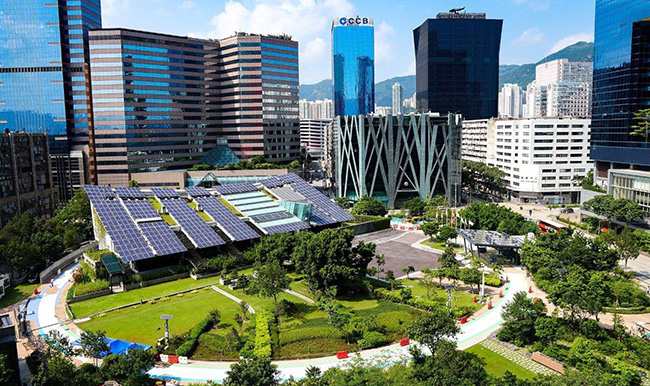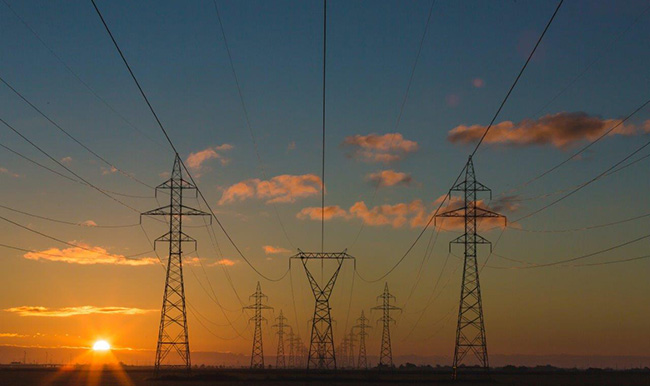What is a Net Zero Energy Building?

What is a net zero energy building? By one definition, it’s a building that produces enough renewable energy to meet or exceed its annual energy consumption requirements.
Much of the push toward net zero energy buildings stems from the first portion of the federal government’s Guiding Principles for Federal Leadership in High Performance and Sustainable Buildings – guidance that has been evolving since 2006 that requires implementation of sustainable federal building design, construction, operation, management, maintenance, and deconstruction toward ensuring that:
- All new federal buildings will achieve zero-net energy by 2030.
- All new construction, major renovation, or repair and alteration of a building complies with the Guiding Principles for Federal Leadership in High Performance and Sustainable Buildings.
- 15% of an agency’s existing and leased buildings above 5,000 square feet meet the Guiding Principles by 2025, and the remainder makes progress toward conforming with the principles.
With the growing necessity for energy-efficient buildings, newer technologies have allowed the incorporation of green strategies into a building’s design, construction, and operation. Advances in technologies, renewable energy systems, and research are making net zero energy buildings a more feasible option.
Four Net Zero Energy Definitions
Because there are very few building sites that are renewable-energy-producing “islands” with no need for connection to the electrical grid, it’s important to understand that while you can maximize the photovoltaic solar panels on a site, most sites pull electricity from the grid at night and during overcast conditions, and then they export electricity to the grid during sunny times. Over the course of a year, an energy-efficient building can use technology to produce as much energy as it consumes from the grid. Achieving a net zero building can be defined and measured in a variety of ways:
- Net Zero Site Energy. This means a site creates at least as much renewable energy as it uses in a year. For example, solar-generated kilowatt hours produced on site during sunny hours equal the kilowatt hours of electricity consumed from the grid to power the site at night and during overcast days.
- Net Zero Source Energy. The site uses only renewable energy – some combination of renewable energy produced on site and renewable energy produced off-site and purchased from the electrical utility through which the site is connected to the grid. The purchased renewable energy costs more than non-renewable energy, and the price paid includes the cost to extract, process, generate, and deliver the energy to the site.
- Net Zero Energy Costs. This is when the amount of money the utility company pays the site owner for the renewable energy the building exports to the grid equals the amount the owner pays the utility for the energy used over the year. If the utility charges more per kilowatt hour pulled into the site than it pays for kilowatt hours exported from the site to the grid, then the site must export more kilowatt hours than it imports to break even cost-wise.
- Net Zero Energy Emissions. This type of building uses no emissions-resulting energy (carbon dioxide, nitrogen oxides, sulfur dioxide, etc.), nor does it offset any emissions by exporting emissions-free energy.
Net zero building principles can be applied to many types of projects, including industrial, commercial, and residential buildings, and they can be applied to new construction or existing buildings.
 The Net Zero Source Energy metric allows the energy to be created either offsite or onsite. The offsite option is especially popular if the building space is limited, and the building owner cannot install renewables such as wind turbines and photovoltaics on the site.
The Net Zero Source Energy metric allows the energy to be created either offsite or onsite. The offsite option is especially popular if the building space is limited, and the building owner cannot install renewables such as wind turbines and photovoltaics on the site.
No matter the metric used to calculate a net zero energy building, lowering the amount of energy usage through sustainable designs should always be considered a high priority. Minimizing energy use can involve installing the most efficient lighting possible along with efficient heat-pump cooling and heating systems and the most sophisticated controls possible. For example, occupancy sensors can tell the cooling/heating/ventilation system and lighting to operate minimally while certain building spaces are unoccupied, thereby cutting energy use without humans ever having to intervene and manipulate the controls.
Our MEP Division continues to design energy-efficient components for each of our new building projects to comply with federal and state net zero requirements and – regardless of whether the measures are required – to save building owners significant operational costs.

Post a comment: